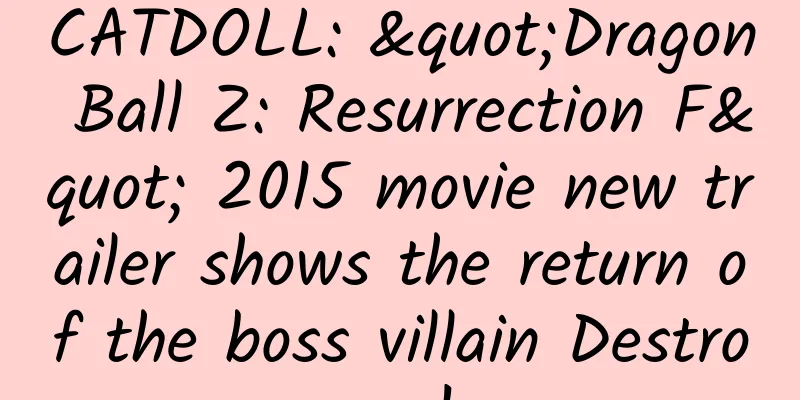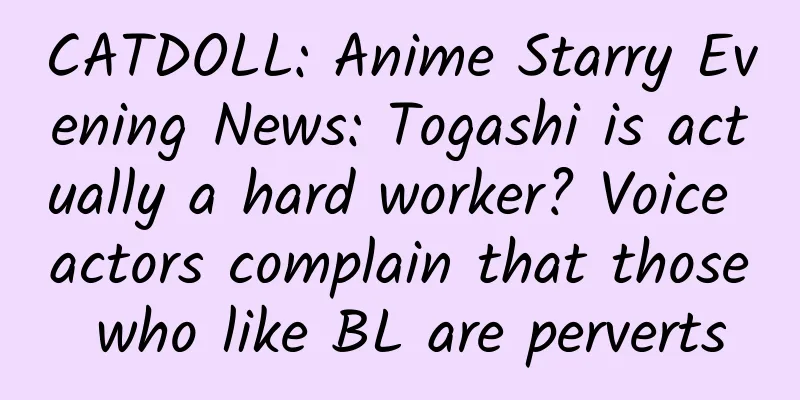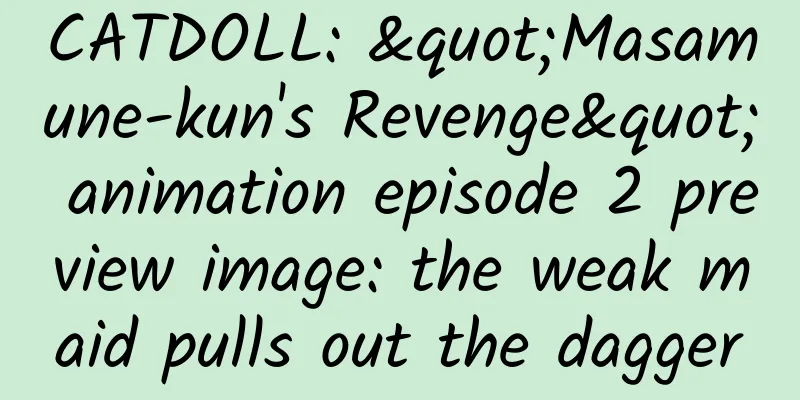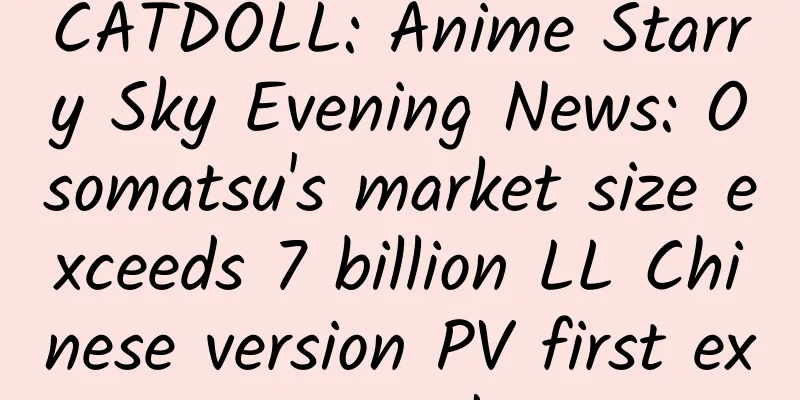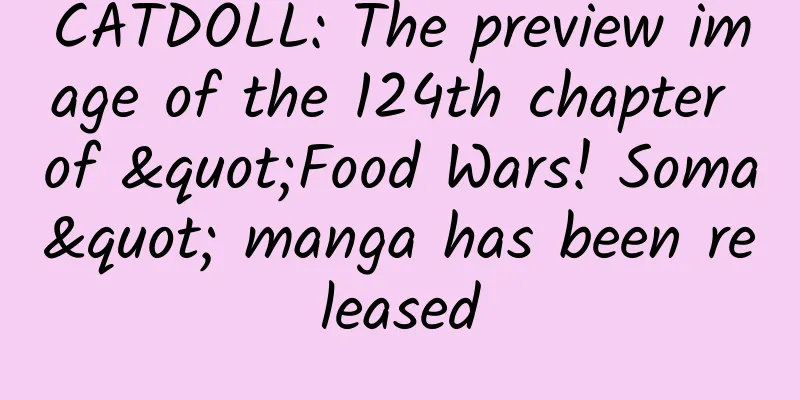CATDOLL: The Japanese animation agency market in the United States

|
A few days ago, Sanwenyu saw a question, "What is preventing China from becoming a major cultural exporter?" There are various opinions. For example, Liang Qiwei believes that the excessive emphasis and obsession with "cultural pride" has become the root cause of hindering the export of Chinese culture. If our creations must reflect traditional Chinese elements, it may keep fans from Europe and the United States out, or be regarded as heavy-tasting and curious. What is more important for cultural output is that the cultural content is liked by people based on their identification and is recognized as an "international mainstream product", such as being able to compete on the same stage with American-made products in the United States. Therefore, this time Sanwenyu will review the history of Japanese anime "export" in the United States and make some analysis of the current situation. Japanese anime takes over America In 2003, Ghibli's film "Spirited Away" won the Oscar for Best Animated Feature Film. Since then, the saying "Japanese animation has taken over America" has become popular. After that, Japanese animation in the United States experienced the popularity of "EVA" and "Ghost in the Shell", and the cold reception of "Gundam". To this day, although Japanese comics are still not mainstream comics in the United States, they have been increasingly accepted and known.
Last year (2014), Books-A-Million, a large American bookstore chain, told investment analysts that the increase in sales of Japanese comics was one of the main factors for the growth of its book sales in the second and third quarters, especially "Attack on Titan". This work is not only extremely popular in Japan, but also in the United States. The English version published by Kodansha America has sold more than 2.5 million copies. However, its original version sold 40 million copies in Japan. In addition to "Attack on Titan", Japanese anime has received more attention in the United States this year than in previous years. In terms of comic book agencies, this year's SDCC and Anime Expo had a lot of news about the introduction of Japanese comics to the American market. Kodansha Comics, a subsidiary of Kodansha America, announced the release of a large-format collector's edition of Akiko Higashimura's work "Jellyfish Princess" and Kousuke Fujishima's new manga "Paradise Residence". The well-known works of Jun Maeda, "Angel Beats!: Heaven's Door", "Nichijou" by Alakeiichi, and the "Sword Art Online" light novel series were announced to be English-language and published by Seven Seas, Vertical, and Yen, respectively. At the beginning of the year, Dark Horse Comics, one of the three largest comic companies in the United States, announced the publication of the first volume of the English version of the popular Japanese comic "Fate/Zero". Later, Dark Horse announced that it had bought out the North American distribution rights for "Giganto Maxia", a new work by Kentaro Miura (author of "Berserk") after more than 20 years. The first volume of the comic will be released on February 3, 2016. In addition to publishing and distributing local comics, Dark Horse is also a sideline in Japanese comic agency. It published the first volume of "Berserk" in English in 2003, and then published all 37 volumes of "Berserk" in 2013. It also represents Japanese comics such as "Akira", "Ghost in the Shell", and "My Goddess". VizMedia, which was established by Shogakukan and Shueisha, also announced that it will launch a series of Japanese comics this year, including a limited edition of 10,000 full-color edition of Obata Takeshi's art book "Blancet Noir", "Goodnight Boobo" by Ichiro Asano, and a girl's manga by Keiko Ishihara. "Goodnight Boobo" is an adult-oriented work that explores life. It tells the story of Boobo, a bird that has transformed into a human form, living in a family. In terms of movies, Lionsgate was revealed to have obtained the film adaptation rights of "Naruto" and is in further negotiations with Michael Gracey in order to let this master of special effects direct the "Naruto" movie. What can be confirmed now is that veteran comic adaptation film producer Avi Arad has confirmed to join the crew. All 72 volumes of the Naruto comics were English-translated and published by Viz Media. According to USA Today, the sales of each volume ranked among the top 100 best-selling books in the United States that week. This performance is comparable to the sales of the most popular superhero comics in the United States, such as Batman, Spider-Man and X-MAN. Japanese animation agency market structure in the United States At present, the comic book agency is dominated by one company, namely Viz mentioned above. Since it is backed by the huge library of works of Shogakukan and Shueisha over the years, it has no shortage of products that are popular in the market, including "Bleach", "One Piece", "Naruto", "Fullmetal Alchemist", "Yu-Gi-Oh" and so on.
In addition to Viz and the above mentioned companies, other Japanese comics agencies include TokyoPop and Del Rey. The former also represented a lot of Japanese comics in the past, but now, due to the increasingly fierce competition in the agency business, it has focused on cultivating American Japanese-style cartoonists; the latter takes the small but fine route, and its agency works include "Mushishi" and "Parasyte". In the animation field, competition among companies is fierce. In the early days, ADV achieved great success by acting as the agent for "Neon Genesis Evangelion". However, after 2000, due to the rising prices of agency licenses, the company could no longer continue and declared bankruptcy in 2009. The more representative ones now include Funimation, which represents well-known works such as "One Piece", "Yu-Gi-Oh" and "Dragon Ball". Viz, with its strong portfolio of comic adaptations, has a clear advantage, representing works such as "Naruto" and "Inuyasha". Kadokawa Pictures USA is the American branch of Kadokawa Books, and has released animations such as "The Melancholy of Haruhi Suzumiya" and "Lucky Star". Bandai (Bandai America) is smaller in scale compared to the above companies, but the popularity of its works in the United States remains high, including "Space Cowboys" and "Ghost in the Shell SAC". Characteristics of Japanese animation entering the US Although overall sales still cannot compare with mainstream anime, Japanese comics are becoming increasingly popular and accepted in the United States. Japanese comics have also made certain adjustments to cater to the United States: The editor of Buzzfeed, an American animation review website, selected "10 Japanese animations that cannot be missed in a lifetime", including "Cowboy Bebop", "Revolutionary Girl Utena", "Death Note", "Steins;Gate", "Crayon Shin-chan", "Fullmetal Alchemist", "Neon Genesis Evangelion", "Mushi-shi", "Wolf's Rain" and "Paranoia Agent", which shows the preference of Americans for Japanese animation. In other words, this is also the direction that Japanese animation is striving to change in the United States.
In terms of content, Japanese anime entering the American market often strive to express human conflicts, and inspire people to strive for progress and realize their ideals while exposing reality, showing oriental characteristics under the condition of cultural consensus. In the above animation, "Revolutionary Girl Utena" directly negates and reverses the inherent positioning of male and female roles, depicting the story of women saving women, and also covers discussions about sociality and ethics. "Fullmetal Alchemist" "depicts themes such as racial differences, war, and genocide vividly." "Neon Genesis Evangelion" is outstanding for its interpretation of the pain of the human body and soul, its strong religious atmosphere, and its questioning of morality. In this way, the depth and meaning of the animation plot are particularly valued in the United States; In terms of expression methods, Japanese animation always focuses on two-dimensional frameworks, striving to give the audience more room for association. This is different from American animation's pursuit of 3D and the expression of the real world, and also brings a different feeling to the audience. In terms of artistic techniques, Americans clearly have a special liking for the delicate design and portrayal of Japanese animation, which seems to be one of the reasons why "Spirited Away" won the Oscar. From the world view, music and character design of "Cowboy Bebop" to the brain warfare and psychological warfare plot of "Death Note" and the color matching of "Mushishi", Japanese animation has taken the word "delicate" to the extreme, creating an "Oriental" style independent of American animation, which naturally attracted a group of animation fans who are tired of Disney and superheroes; During the release process, Japanese animation has made adjustments to the length of the animation, the number of episodes, and the names and styles of characters. In order to cater to the appreciation habits of Americans, that is, each episode of the animation is independent and there is no connection between the episodes, "ForceFive" and "Voltron" will be composed of several independent TV animations when they are broadcast in Japan, and the total number of animation episodes will also be adjusted to 52 or 104 episodes that American TV stations and audiences are accustomed to. However, this introduction process is still difficult. One of the reasons is that Japan has basically no anime strategically produced for the US market, so the violence and sexuality are not in line with the US ethical standards and broadcast standards. On the other hand, the US copyright and other related legal systems and business systems are too complicated and cumbersome for Japan, so Japan has almost handed it over to agents. "Everything is handed over to the sales company that offers the highest minimum guarantee amount" has become the mainstream of current business. As a result, risk control is easy, but the opportunity to accumulate business experience is lost and the opportunity to further expand the business is lost. It can be seen that Japanese anime has a bright future in the United States, but there is still a long way to go. Original link: >>> How to export Japanese anime to the United States? |
<<: CATDOLL: The latest promotional poster for the movie "Organ" is released
Recommend
CATDOLL: Japanese magazine defamed "Love Live!" and was attacked by fans
After the Japanese media recently exposed that th...
CATDOLL: The fifth popularity ranking of "Yowamushi Pedal" is announced, and Yusuke Makishima takes the first place again
There must be many viewers who are new to the ani...
CATDOLL: Hinata is not afraid of death just for Naruto "THE LAST-Naruto THE MOVIE" sixth PV released
The movie version of Naruto, "THE LAST-Narut...
CATDOLL: Fans want to sue Yukari Tamura and Yui Horie for "age fraud" by claiming to be 17-year-olds
Babyface is generally used to describe people who...
CATDOLL: Station B announced improvements to premium membership features and stopped direct purchases
Some time ago, Bilibili suddenly launched a paid ...
CATDOLL: The comic "Letters from Puppy Heaven" will be released as an OVA, and dogs are very moved
Dogs are here to warm your heart too! The work &q...
CATDOLL: The first trailer of the new April show "Ace Attorney" was released and the voice actor information was exposed
The first episode trailer of the new April 2016 a...
CATDOLL: Fans celebrate the birthday of the character in "Kuroko's Basketball" and the scene is as spectacular as a magic ceremony
July 7th is the romantic Tanabata Festival in Jap...
CATDOLL: Gear 4 activated! Luffy's voice actor from One Piece supports Kumamoto earthquake
The earthquake in Kumamoto, Japan a few days ago ...
CATDOLL: The live-action movie "Bakuman" special video is released, and the protagonist successfully counterattacks
The official trailer for the live-action movie &q...
CATDOLL: It's all a routine. The latest movie version of One Piece will be released as a novel version
The latest movie version of One Piece, One Piece ...
CATDOLL: July new show "Overlord" PV 2nd bullet exposed theme song first listen
The animation "Overlord" will premiere ...
CATDOLL: Another fresh work? The animation "Sea Wave" announced the planning and production news
"Nichijou no Nichijou" has conquered ma...
CATDOLL: The ratings of the new chapter of "One Piece" continue to rise and ranked second on the list
As both One Piece and Dragon Ball Super have ente...
CATDOLL: The true identity of Kaido, the Four Emperors of One Piece, is revealed and he is suspected to be the final boss of Wano Country
In the world view of One Piece depicted by Oda, t...
